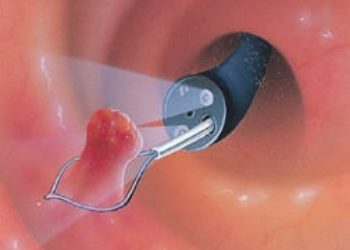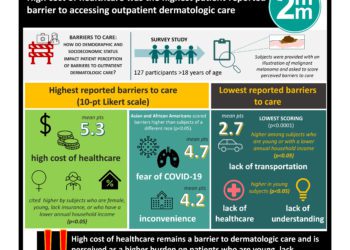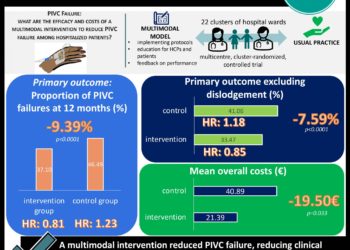Intensive management for sicker patients increases outpatient care but not costs
1. Patients who were apart of the intensive management group that were higher risk received greater outpatient care.
2. Overall mean costs between intensive management and control groups of veterans remained similar.
Evidence Rating Level: 1 (Excellent)
Study Rundown: This study focused on high-quality care within primary care models. The authors aimed to determine the impact of intensive management programs on veteran association (VA) healthcare utilization and costs. This goal was achieved through developing a randomized design that to compare high-risk patients with access to an intensive management program with usual patient centered medical home (PCMH) care. This study has several limitations. Of note, the study may not be applicable to all patient populations, as it only assessed 5 VA primary care sites. The results of the study suggested that patients with access to the intensive management care did not have lower costs, including both acute care and total costs. As a result, it remains unclear whether there are significant cost benefits from more intensive management for sicker patients.
Click to read the study in Annals of Internal Medicine
Relevant Reading: Interventions to improve veterans’ access to care: a systematic review of the literature
In-Depth [randomized quality improvement trial]: The authors of this study conducted a randomized quality improvement trial that assessed whether there are cost benefits to intensive management programs in primary care. The study was conducted using 5 U.S VA sites, specifically looking at patients that were higher risk for hospitalization with a recent acute care episode. The intensive management care involved greater care coordination, health coaching, medication reconciliation, and home visits, among other resources. These goals were accomplished through an interdisciplinary team. For the patients that were a part of this intensive management group, 487 (44%) received the intensive outpatient care. The intervention group had higher costs related to home-based primary care, but lower costs for mental health intensive case management. When comparing the two groups, no statistically significant differences were found regarding mean number of inpatient stays, inpatient days, or emergency department visits following the intervention.
Image: PD
©2018 2 Minute Medicine, Inc. All rights reserved. No works may be reproduced without expressed written consent from 2 Minute Medicine, Inc. Inquire about licensing here. No article should be construed as medical advice and is not intended as such by the authors or by 2 Minute Medicine, Inc.







